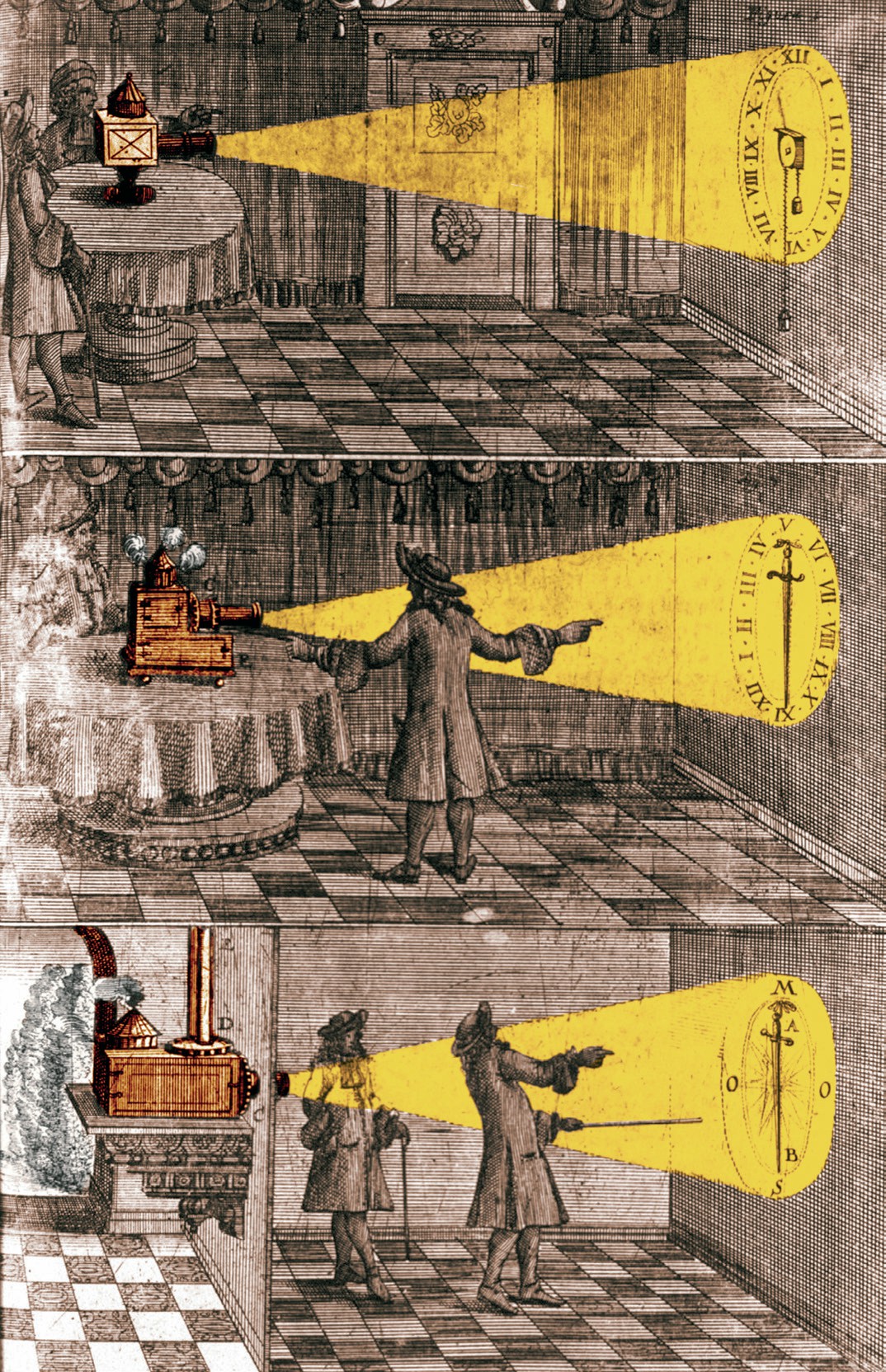
In 1685 Johann Zahn (1641–1707), a German monk, published a collection of diagrams and descriptions of optical devices, including telescopes, microscopes, projectors and cameras. He demonstrated how lenses and mirrors could be used to project, enlarge and focus an image (Figure 1). For example, a camera obscura (Latin: ‘darkened room’) projected an image onto a screen where it could be drawn and studied. In this way, images of the Sun were used to study sunspots (Figure 2).
Unlike modern cameras, those in the seventeenth century could not make a permanent record of an image. But the development of photography in the nineteenth century led to techniques that paved the way for modern cinema and video. French scientist Etienne-Jules Marey (1830 –1904) was among those who pioneered the use of photography to study motion. Two centuries after Zahn, in 1882, Marey made a camera that captured 12 images per second, all on the same picture, enabling him to study the movement of different animals. His studies of birds (Figure 3) helped people understand the physics of flight.
Your organisation does not have access to this article.
Sign up today to give your students the edge they need to achieve their best grades with subject expertise
Subscribe




